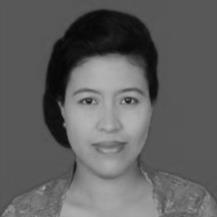International Journal of Image, Graphics and Signal Processing (IJIGSP)
IJIGSP Vol. 11, No. 11, 8 Nov. 2019
Cover page and Table of Contents: PDF (size: 891KB)
Real-Time Face Recognition with Eigenface Method
Full Text (PDF, 891KB), PP.1-9
Views: 0 Downloads: 0
Author(s)
Index Terms
Biometrics, real-time recognition, face recognition, eigenface method, Euclidean distance
Abstract
Real-time face image recognition is a face recognition system that is done directly using a webcam camera from a computer. Face recognition system aims to implement a biometrics system as a real-time facial recognition system. This system is divided into two important processes, namely the training process and the identification process. The registration process is a process where a user registered their name in a system and then registers their face. Face data that has been registered will be used for the next process, namely the identification process. The face registration process uses face detection using the OpenCV library. The feature extraction process and introduction to the recognition system use the Eigenface method. The results of this study found that, the Eigenface method is able to detect faces accurately up to 4 people simultaneously. The greater the threshold value will result in a greater value of FRR, while there isn’t any FAR value found from different thresholds. The level of lighting, poses, and facial distance from the camera when training and testing the face image heavily influences the use of the eigenface method.
Cite This Paper
Ni Kadek Ayu Wirdiani, Tita Lattifia, I Kadek Supadma, Boy Jehezekiel Kemanang Mahar, Dewa Ayu Nadia Taradhita, Adi Fahmi, " Real-Time Face Recognition with Eigenface Method", International Journal of Image, Graphics and Signal Processing(IJIGSP), Vol.11, No.11, pp. 1-9, 2019. DOI: 10.5815/ijigsp.2019.11.01
Reference
[1]A. A. K. Oka Sudana, I. K. G. Darma Putra, and A. Arismandika, “Face Recognition System on Android Using Eigenface Method,” Journal of Theoretical and Applied Information Technology, vol. 61, no. 1, pp. 128–135, 2014.
[2]I. K. S. Widiakumara, I. K. G. D. Putra, and K. S. Wibawa, “Aplikasi Identifikasi Wajah Berbasis Android,” Lontar Komputer : Jurnal Ilmiah Teknologi Informasi, vol. 8, no. 3, pp. 200, 2018.
[3]A. De, A. Saha, and M. C. Pal, “A human facial expression recognition model based on eigen face approach,” Procedia Computer Science, vol. 45, no. C, pp. 282–289, 2015.
[4]D. M. Prasanna and C. G. Reddy, “Development of Real Time Face Recognition System Using OpenCV,” International Research Journal of Engineering and Technology, vol. 4, no. 12, 2017.
[5]X. Zhang, T. Gonnot, and J. Saniie, “Real-Time Face Detection and Recognition in Complex Background,” Journal of Signal and Information Processing, vol. 08, no. 02, pp. 99–112, 2017.
[6]N. H. Barnouti, S. S. M. Al-Dabbagh, and M. H. J. Al-Bamarni, “Real-Time Face Detection And Recognition Using Principal Component Analysis (PCA) – Back Propagation Neural Network (BPNN) And Radial Basis Function (RBF),” Journal of Theoretical and Applied Information Technology, vol. 91, no. 1, pp. 28–34, 2016.
[7]S. Zhang, L. Wen, H. Shi, Z. Lei, S. Lyu, and S. Z. Li, “Single-Shot Scale-Aware Network for Real-Time Face Detection,” International Journal of Computer Vision, 2019.
[8]S. Sayeed, J. Hossen, V. Jayakumar, I. Yusof, and A. Samraj, “Real-Time Face Recognition for Attendance,” Journal of Theoretical and Applied Information Technology, vol. 95, no. 1, 2017.
[9]F. P. Mahdi, M. M. Habib, M. A. R. Ahad, S. McKeever, A. S. M. Moslehuddin, and P. Vasant, “Face recognition-based real-time system for surveillance,” Intelligent Decision Technologies, vol. 11, no. 1, pp. 79–92, 2017.
[10]I. N. G. A. Astawa, I. K. G. D. Putra, I. M. Sudarma, and R. S. Hartati, “The Impact of Color Space and Intensity Normalization to Face Detection Performance,” TELKOMNIKA (Telecommunication Computing Electronics and Control), vol. 15, no. 4, pp. 1894, 2018.
[11]W. Deng, J. Hu, J. Lu, and J. Guo, “Transform-invariant PCA: A unified approach to fully automatic face alignment, representation, and recognition,” IEEE Transactions on Pattern Analysis and Machine Intelligence, vol. 36, no. 6, pp. 1275–1284, 2014.
[12]M. Kas, Y. El merabet, Y. Ruichek, and R. Messoussi, “Mixed neighborhood topology cross decoded patterns for image-based face recognition,” Expert Systems with Applications, vol. 114, pp. 119–142, 2018.
[13]V. R. Peddigari, P. Srinivasa, and R. Kumar, “Enhanced ICA based Face Recognition using Histogram Equalization and Mirror Image Superposition,” 2015 IEEE International Conference on Consumer Electronics, ICCE 2015, pp. 625–628, 2015.
[14]W. Huang and H. Yin, “Robust face recognition with structural binary gradient patterns,” Pattern Recognition, vol. 68, pp. 126–140, 2017.
[15]H. Roy and D. Bhattacharjee, “Local-Gravity-Face (LG-face) for Illumination-Invariant and Heterogeneous Face Recognition,” IEEE Transactions on Information Forensics and Security, vol. 11, no. 7, pp. 1412–1424, 2016.
